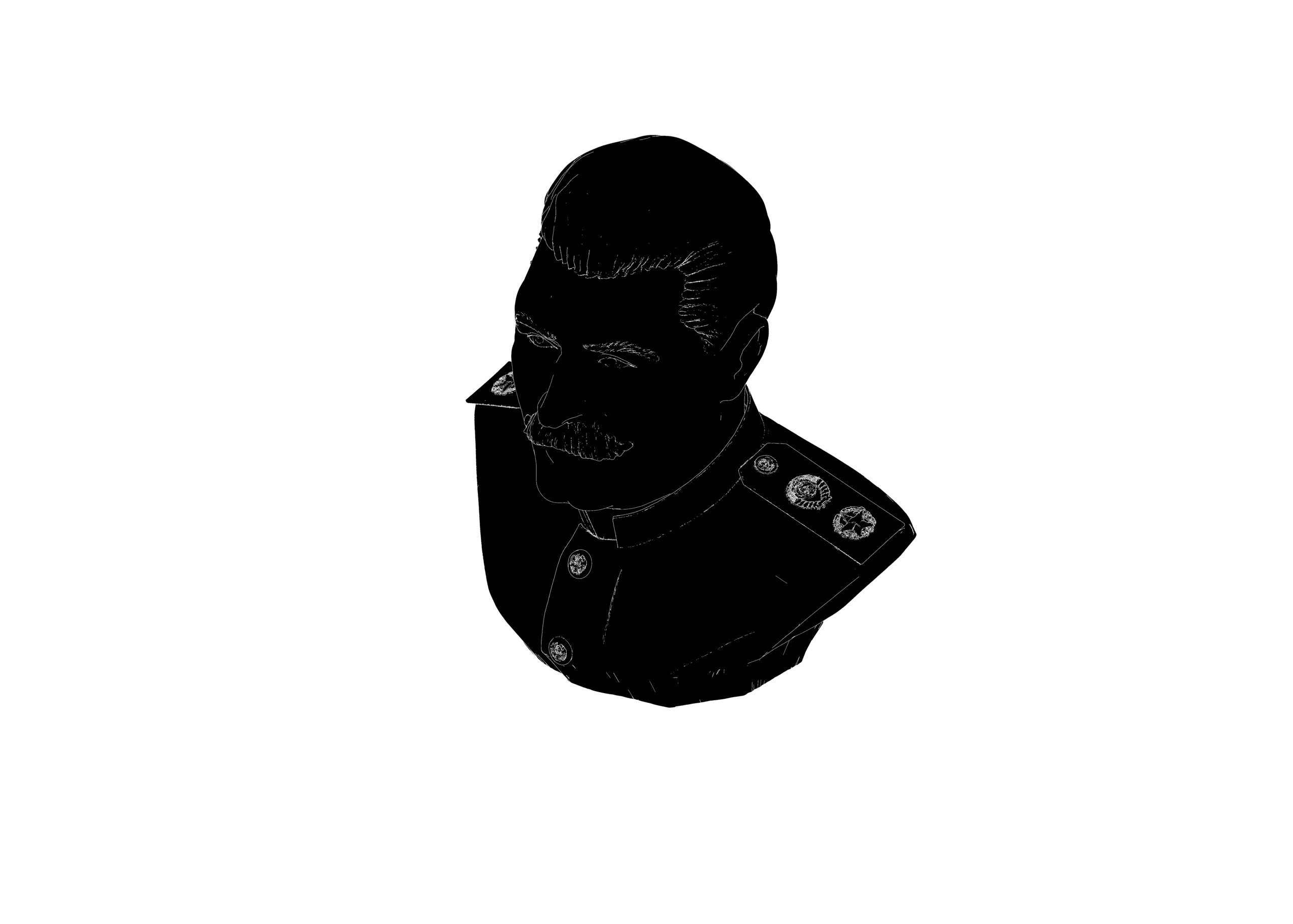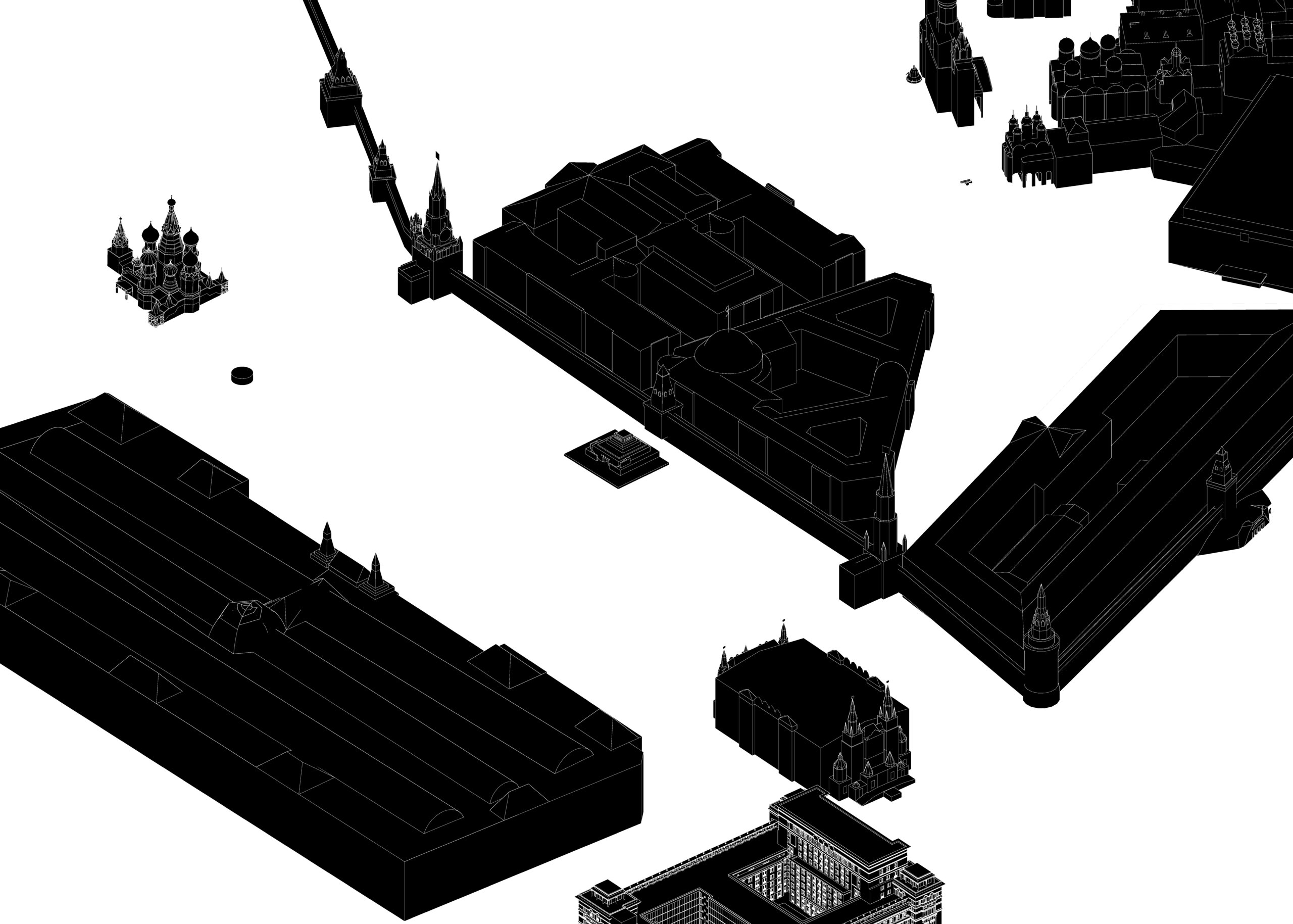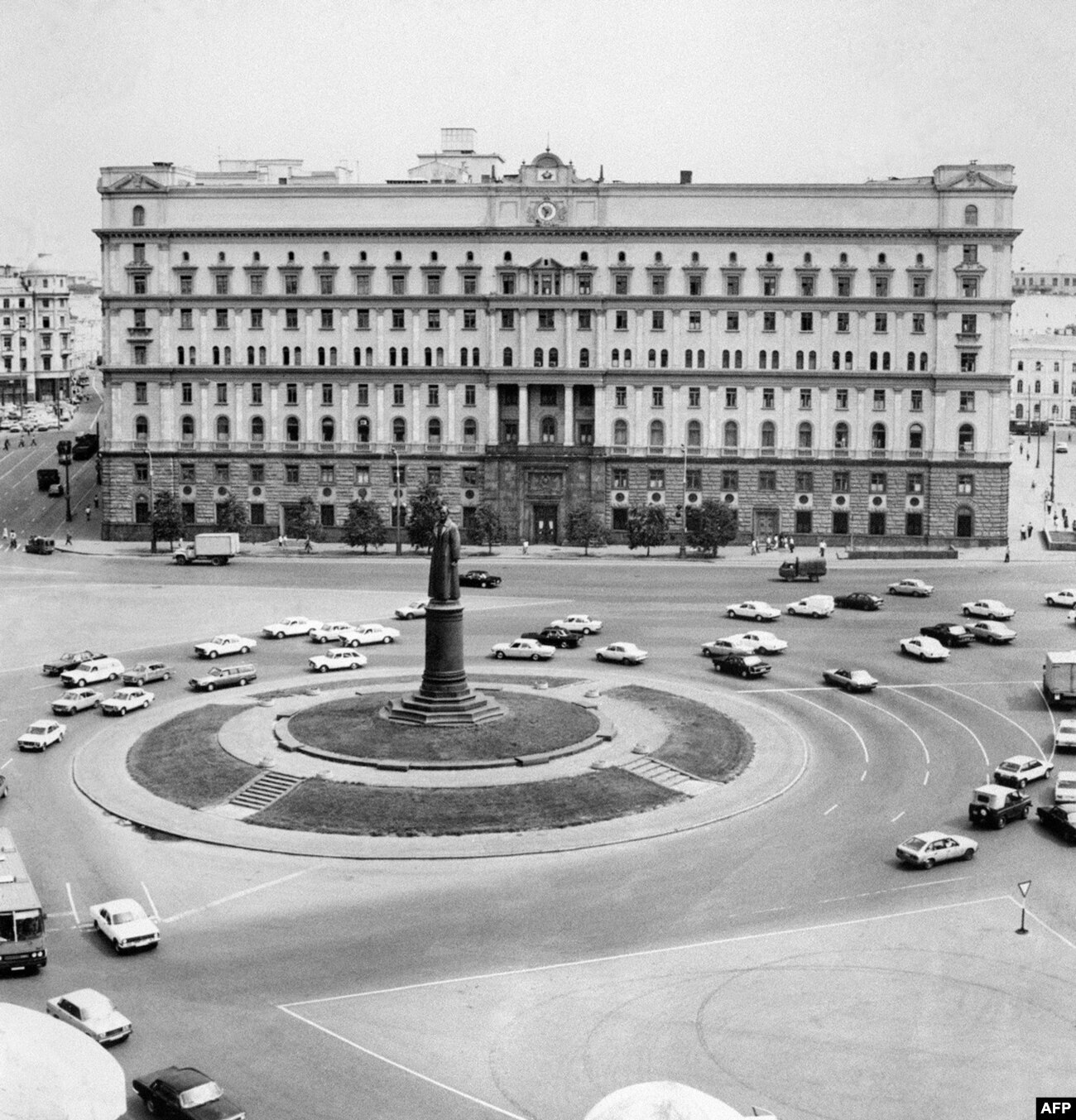The dichotomy of memory in the former USSR republics
The continuity of memory in post-communist Russia
BREJNEV: Mom, what do you think of my office?
Mom: It's beautiful, Leonid.
He takes her to see his spacious apartment in Moscow:
BREJNEV: Mother, what do you think of my apartment?
Mother: It's beautiful, Leonid.
He takes her to his dacha outside Moscow: Brezhnev: Mother, what do you think of my house?
Mother: It's beautiful, Leonid.
Brezhnev: Mother, I've shown you my elegant office, apartment and dacha, and yet you don't seem enthusiastic. Aren't you proud of me?
Aren't you impressed by any of these things? What's the matter?
MAMA: It's all nice Leonid, but I'm worried about what will happen when the communists come to power!1
Introduction
Liberated from communism, Eastern Europe has undergone a major transformation. Between 1990-2000, four states disappeared from the map and 14 countries were born. At the far western end of the Soviet Union, Estonia, Latvia, Lithuania, Belarus, Ukraine, Moldova, Latvia, Lithuania, Belarus, Ukraine and Russia became independent. The Czech Republic and Slovakia emerged as a result of the dissolution of the Czechoslovak federation in the "Velvet Divorce". Yugoslavia also split into the republics of Slovenia, Croatia, Bosnia and Herzegovina, Macedonia, Serbia and Montenegro.2
This metamorphosis of nations can be compared in scale to the results of the Treaty of Versailles after the First World War. The emergence of nation-states after the first world conflagration was the conclusion of a long process that began in the 19th century. The occurrence of a similar event at the end of the 20th century was a surprise.3
Another casualty of the 1989 revolutions was timing, similar to what happened during the French Revolution. To punctuate time differently, days off and holidays were changed. In the case of Romania, days like May 1 or August 23 lost their importance and were replaced by other holidays like December 1 or January 24. Religious holidays regained their role after the communist government minimized their importance. State-supported activities were chosen to promote the country's new direction.
Light from the east
The situation in Russia differs quite a lot from the former Eastern bloc states and the republics that were part of the USSR.
Within the mythology of empires, the role of ruins and monuments of the past are of major importance. Cities such as Rome, Constantinople and Moscow are built on the ruins of the old city, becoming their source. The destruction of the predecessor enables the act of rebirth in a Freudian repetition.4
For the USSR the act of symbolic birth is the destruction of the heritage of the Tsarist Empire and its negation. The destruction of the cathedral of Christ the Savior Cathedral in Moscow in 1931 represents the symbolic birth of the Soviet Empire.5
Soviet monuments were placed in key locations, such as in front of town halls, at major intersections or in central squares. Placed on a high pedestal, the monument was difficult to understand from a short distance. Visible from a distance, the closer you got, the more it was lost in the urban landscape.
Such a perception of the monument makes it a special cult object. It keeps the viewer at a distance. This distance is inherent to its function, so getting close to the monument was a violation of the sacred zone. A number of important monuments in Moscow were created with this intention in mind. The statue of Feliks Dzerzhinsky, near the KGB headquarters, was one of the most famous cases.
The distance to the monument is closely related to the height of the monument. The smaller the monument, the easier it is to get close to it, even if this proximity feels like a violation of one's personal zone. This zone of closeness is similar to a person's comfort zone that Ervin Goffman speaks of, or the zone of personal manifestations that Merleau-Ponty speaks of. But these protective zones surrounding the body are located around living beings, not around images cut in stone. When we see workmen around a monument, taking it down, there is a sense of awe in the viewer.
This violation of space is part of the function of these monuments. One of the most important Soviet statues on Mamai Hill near Volgograd, called "Motherland Calls You," was built on such a scale that the visitor feels the colossal weight and immeasurable force. The sculptor Yevgeny Vuchetich wanted to emphasize the pressure and importance of the wartime battle at Stalingrad.
Destalinization
Destalinization in the USSR, initiated by Nikita Khrushchev in the mid-1950s, marked a significant political and cultural shift aimed at dismantling the oppressive legacy of Joseph Stalin, characterized by the denunciation of his cult of personality, the relaxation of repressive policies and a broader push for reform within the Communist Party and Soviet society. Nikita Khrushchev denounces the former dictator in his speech On the cult of personality and its consequences.
For a long time, the idea of reform was an anathema to the Soviet body politic. Stalin's protégé Vyacheslav Molotov, who vehemently opposed the de-Stalinization begun by Khrushchev, vehemently condemned the change:" There are reformist communists and genuine communists". 6
Following the de-Stalinization, Stalin's body was moved from Lenin's mausoleum in 1961.
Red Square
In the Russian case, there was a rejection of change. This is symbolized in Moscow by the preservation of the Kremlin. Although most European cities, such as Paris or Vienna, tore down their defensive walls in the 19th and 20th centuries, the Kremlin remained paralyzed over time. 7
Michel Foucalt observed that in the late 18th, early 19th century, architecture was concerned with population, health and proper building in the urban area. Initially the main concerns of architecture were related to the manifestation of power.
Soviet leaders were captivated by the Kremlin through the symbolic manifestation of power by the city walls. After the fall of the Tsarist regime, Red Square became a burial ground for Bolshevik soldiers who died in the Revolution. Later, with the erection of Lenin's mausoleum, the area next to the Kremlin wall became the final resting place for heroes of the Soviet Union. Between 1917 and 1985, various communist leaders were buried here, including Konstantin Chernenko, Felix Dzerzhinsky, Mikhail Frunze, Mikhail Kalinin, Joseph Vissarionovich Stalin, Kliment Voroshilov and Leonid Brezhnev. Other important figures in Russian history buried here are Yuri Gagarin and Marshal Georgy Khukov.
In 1953, when Stalin died of a stroke, the communist leader was buried in the Lenin Mausoleum, designed by Alexei Viktorovich Shchusev. The removal of Stalin's body from the Lenin Mausoleum to a less prominent location within the Kremlin walls symbolizes a significant change in the political landscape of the Soviet Union, reflecting the regime's attempts to distance itself from Stalinist ideologies.
Lenin's Mausoleum
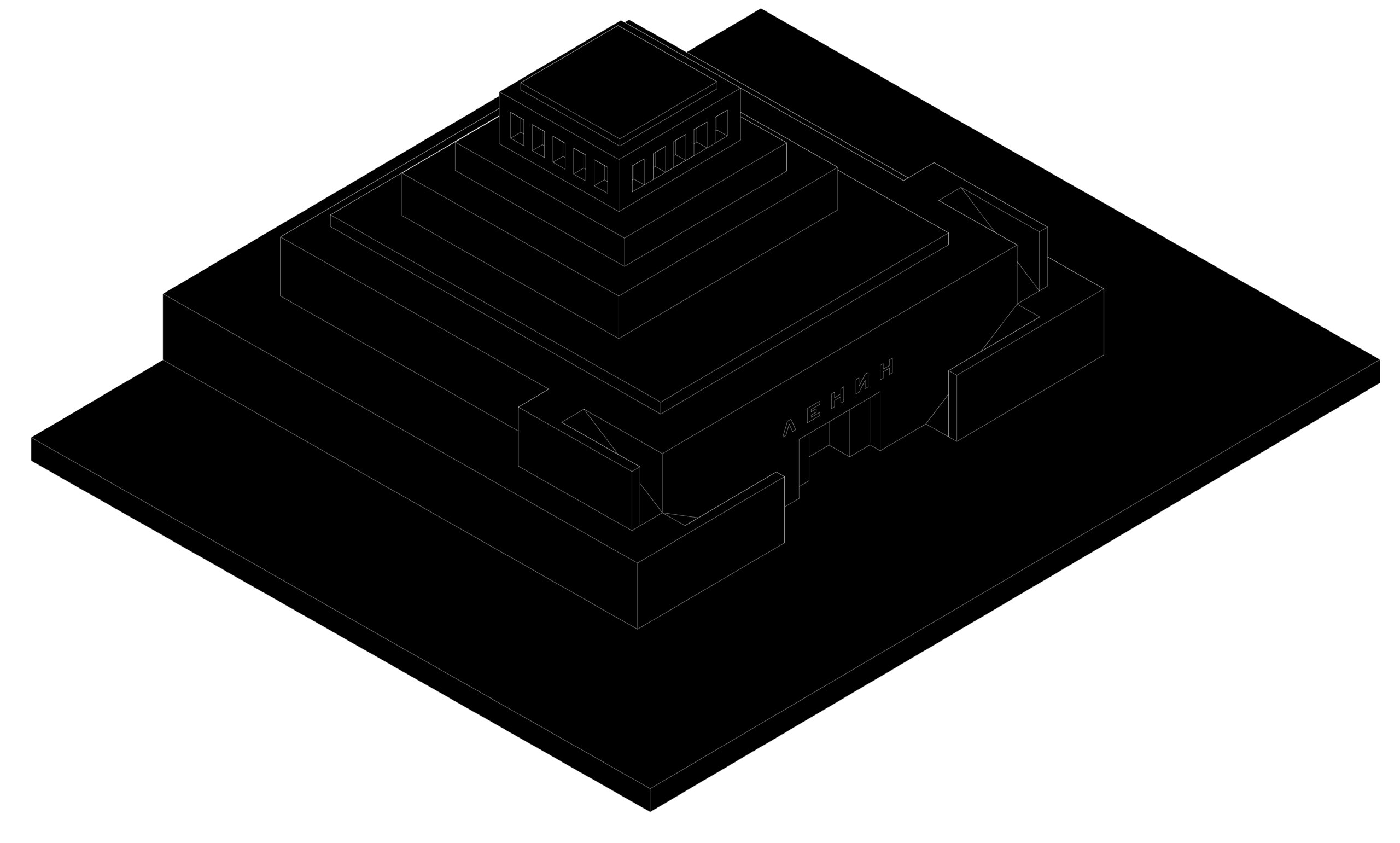
© Bogdan Ionuț Oțelea
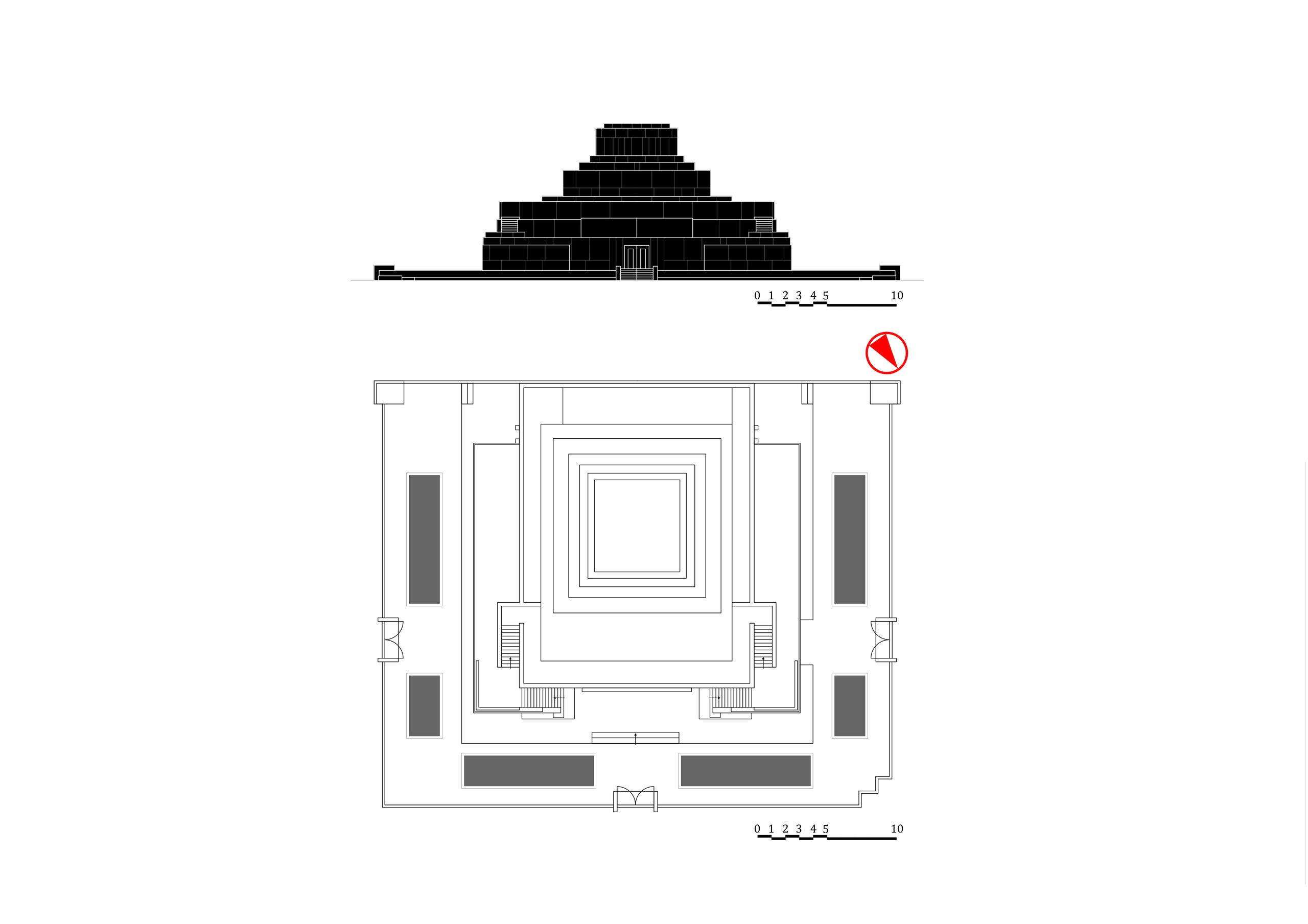
© Bogdan Ionuț Oțelea
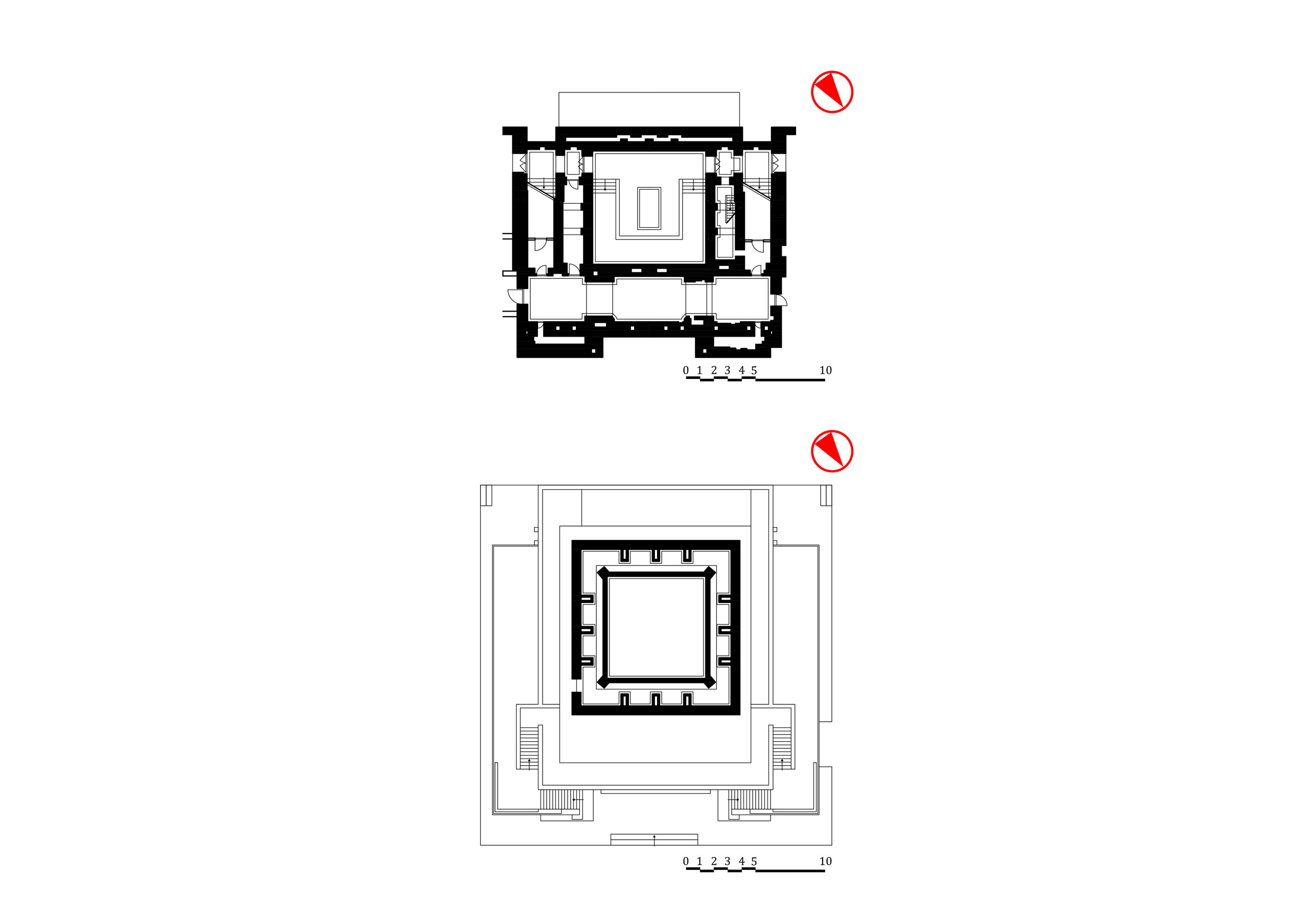
© Bogdan Ionuț Oțelea
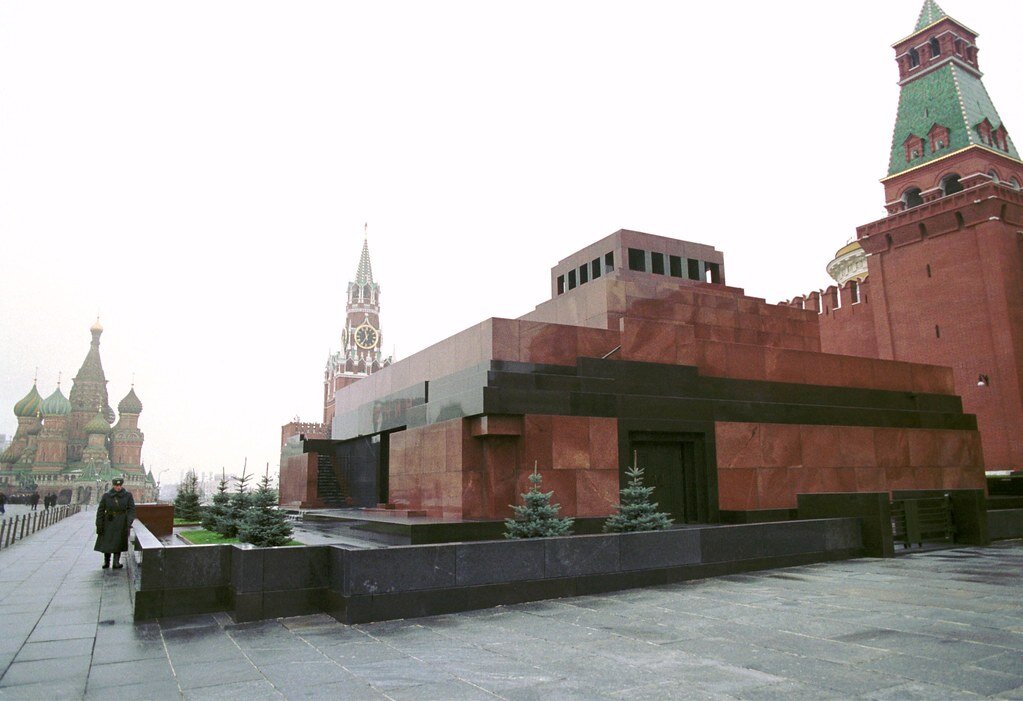
© https://www.rferl.org/a/statue-dzerhinsky-russia-soviet-kgb/25136433.html
The Lenin Mausoleum, located in Moscow's Red Square, serves as a significant symbol of Soviet history and the cult of personality around Vladimir Lenin. Since its establishment shortly after Lenin's death in 1924, the mausoleum has been a focal point for public commemoration and political discourse, reflecting the complex interplay between memory, ideology and architecture in the Soviet context.
Originally, the mausoleum was built of wood shortly after Lenin's death. Between 1929-1930, the mausoleum was built of granite by the architect Alexey Shchusev. The new monument was built of precious materials such as marble, porphyry, granite and labradorite, after reports that the old monument was affected by mold.
After Stalin's death, his embalmed body is laid next to that of Lenin. It remained in the mausoleum between 1953 and 1961. On October 31, 1961, in the middle of the night, Stalin's body is moved and any inscriptions in the mausoleum that refer to him are removed. Stalin falls victim to the measures that the dictator had promoted years earlier, when his victims became non-persons overnight, disappearing in all respects.
A year later, on October 21, 1962, Yevgeny Yevtushenko's poem (see Appendix) appeared in the party newspaper Pravda, which supported the policy of Destalinization but claimed that his descendants remained Stalinists. Towards the end of the poem, the question is asked "...But how to uproot Stalin from Stalin's heirs!!....". The de-Stalinization meant a mild criticism of Stalin's regime in order to allow commemoration of the dictator's achievements. However, at the 22nd Congress of the Communist Party of the Soviet Union, backed by Nikita Khrushchev, the idea of disinterring Stalin's body from the mausoleum, renaming cities after the dictator and other Soviet politicians, was accepted.
Since 1991, there has been talk of moving Lenin's body from his mausoleum in Red Square. The monument was placed in a subordinate relationship to Red Square, a space full of symbolism for the Russian world. The mausoleum, because of the materials used, does not stand out in the square.
Monuments are erected in spaces of maximum visibility, but in the case of Red Square, any monument pales in scale compared to the Kremlin walls. 8
After Lenin came to power, the dictator came up with a strategy to continue the revolutionary tide and spread his revolutionary ideas. Lenin proposed "Monumentalist Propaganda" as a method of propagating the communist revolution.
Monument to Feliks Dzerzhinsky, Moscow
Feliks Dzerzhinsky was the leader and founder of the secret police, called the All-Russia Extraordinary Commission (Russian ВВсеросссийская Чрезвычайная Комисссия), abbreviated simply VChK, but popularly known as Cheka. Coming from a Polish noble family, he became involved in politics in the Tsarist Empire, then played an important role in the October Revolution. In December 1917, he founded the Cheka, whose central role was to suppress anti-revolutionary activities throughout the Soviet Union. Feliks Dzerzhinsky died on July 20, 1926, in Moscow after a two-hour speech denouncing the opposition within the Communist Party. The communist leader was buried in the Necropolis near the Kremlin wall.
The statue dedicated to Feliks Dzerzhinsky was made by sculptor Yevgeny Vuchetich, the author of the famous "Motherland is calling you!" statue dedicated to the defenders of Stalingrad.
"Iron Felix" was for decades, until 1991, the main symbol of repression in the Soviet Union. The monument was erected on Lubyanka Square in front of the KGB headquarters. In front of the secret police headquarters was another monumental building with arches, which housed the Children's World shop. So Muscovites used to joke that someone "went to the Children's World" when he was in trouble with the authorities. The statue was demolished on August 22, 1991. The monument was dumped in Moscow's Sculpture Park in 1992.
From 1991 to the present day there have been long-running debates over the return of the statue of Feliks Dzerzhinsky to Lubyanka Square. In 2021, the Moscow Prosecutor General's Office ruled that the demolition of the statue had no legal basis and that no administrative act authorizing the work could be found.
On September 11, 2023, a bronze statue of him was erected in front of the SVR headquarters in Moscow's Yasenevo district. The statue is a copy of the original. 9SergeyNaryshkin, the director of the SVR, who unveiled the statue, remarked that the statue was aimed at NATO countries, Poland and the Baltic states. Similarly, theIron Felixstatue was oriented in a similar manner. The director of the SVR, commented that the threat to Russia still comes from the Northwest, just as before 1991.10
Continuity
Although there were timid attempts after the fall of the USSR to demolish Soviet monuments and relics, much of this has remained. Russia inherited 7700 monuments to the Soviet revolutionary leader Lenin, of which about 6000 remain. These monuments were erected at the "request of the working people" in parks, public squares, near factories or in front of institutional buildings.
On February 1, 2023, a bust of former dictator Stalin was unveiled in the city of Volgograd. The work belongs to the plastic artist Sergey Shcherbakov.11 Most monuments of the former dictator were taken down and relocated to the Moscow Sculpture Park on Krymsky Val Boulevard. In May 2021, 56% of respondents to an opinion poll by the independent research center Levada said Stalin was a "great leader," double the number in 2016. This attitude is linked to the memory of his victory during World War II, a turning point in modern Russian history. 12
In July 2021, Vladimir Putin signs a document prohibiting the denial of the "decisive role" the Soviet Union played in the victory over "fascism". Moreover, the State Duma has validated a law which puts the crimes committed by the USSR on an equal footing with those committed by Germany. 13 These political decisions result in historical amnesia and the rewriting of past events in order to legitimize the current political regime and unify the nation around the memory of the "Great Patriotic War".
Continuity or not
After the fall of the Iron Curtain there was a period of iconoclasm. Monuments dedicated to the Red Army were torn down so that the new governments could gain legitimization, and replaced with the new symbols. A period of disinterest followed, due to the new governments' preoccupation with transforming the countries economically and socially in the framework of NATO and EU membership.
The less controversial monuments remained in place, although they lost all significance. They were no longer the subject of celebrations, going unnoticed. The problem arose with the old unoccupied plinths, reminders of the former statues. Richard Esbenshade observed in 1995: "They have remained in place, but they are no longer present, in the Derridean sense, their absence is marked"14
Compared to the rest of Eastern Europe, monuments and the memory promoted by the Russian state remained in a deadlock. Vladimir Putin's coming to power in 2000 led to a slight "Stalinization" around his personality. Russia, seeing itself as the successor to the USSR, wanted a return to the pre-1991 situation, the fall of the Soviet Union being considered the greatest geopolitical disaster of the century. 20th century. 15
Vladimir Putin and his regime have actively promoted, since the beginning of his political career, the myth of the besieged citadel, which describes how Russia is surrounded by malevolent powers.16
Alain Besançon, the French historian, says of Russia that the tradition of lying is as old as the country. Along with the Marquis de Cuisine, he declares that lying is an essential Russian characteristic .17
The Siloviki, a powerful faction of the security and military elites, have become instrumental in consolidating Vladimir Putin's authoritarian regime, shaping Russia's political landscape through a mix of state control and nationalist rhetoric that emphasizes stability and security. The system is modeled on that of the Byzantine Empire, where under the Pronoia system, land was conditionally granted by the emperor, primarily to military personnel, which conferred specific rights and privileges over various government properties.18
Thus, Russia continues to preserve a medieval-inspired institution that strongly shapes society. This is reflected in the overall appearance of Russia's symbolic center. The Red Square takes the form of a medieval market square, where the church and the tombs of the most prominent personalities are located. Near the square is the administrative area, symbolically protected by the Kremlin walls.
In recent years, Russia under Vladimir Putin has seen a revival of the memory of communist leaders as relations with Europe and the USA have weakened. The restoration of the statue of Feliks Dzerzhinsky, the founder of the KGB, shows the return of oppression and an atmosphere of tension in international relations.
Moreover, the debate surrounding the Feliks Dzerzhinsky monument is emblematic of a broader struggle over historical memory in Russia. The presence of the monument in Lubyanka Square evokes memories of state terror and repression, provoking discussions about responsibility and the need for a nuanced understanding of the past.
Bibliography
Condee, Nancy. Soviet Hieroglyphics Visual culture in late twentieth- century Russia. Bloomington: Indiana University Press, 1995.
Ochman, Ewa. Post-Communist Poland- Contested Pasts and Future Identities. New York: Routledge Publishers, 2013.
Online articles
Putin: Soviet collapse a 'genuine tragedy': https://www.nbcnews.com/id/wbna7632057 accessed on 05.09.2023
Batyrov, Timur, 'The prosecutor's office recognized the demolition of the monument to Dzerzhinsky on Lubyanka as illegal', Forbes Russia, 2021: https://www.forbes.ru/newsroom/obshchestvo/427917-prokuratura-priznala-nezakonnym-snos-pamyatnika-dzerzhinskomu-na accessed 02.01.2025
Nichols, Tom, "The Mysterious Return of a Soviet Statue in Russia", The Atlantic, 2023: https://www.theatlantic.com/ideas/archive/2023/09/russia-soviet-secret-police-dzerzhinsky/675337/ accessed 02.01.2025
Comer, Margaret, et al. "Lubyanka: dissonant memories of violence in the heart of moscow". Memory Studies, vol. 16, no. 3, 2023, pp. 561-575. https://doi.org/10.1177/17506980231162332
Image Sources
Fig. Cover by the author.
Fig.1 Image by the author.
Fig.2 Image by the author.
Fig.3 Image by the author.
Fig.4 Author's image.
Fig.5 Image by author.
Fig.6 https://www.flickr.com/photos/mr_peter/38438108201
Fig.7 https://www.rferl.org/a/statue-dzerhinsky-russia-soviet-kgb/25136433.html
Annex
Poem "Stalin's Heirs", Yevgeny Yevtushenko, Pravda, October 21, 1962
Current Digest of the Soviet Press. Vol. XIV, No. 40 (1963), p. 5
"The marble was silent.
The glass glowed in silence.
The guards stood silent,
sunbathing.
But the coffin gave off a faint vapor.
The breath leaked through a crack
As they took her through the Mausoleum doors.
The coffin floated slowly by,
Its corners touching bayonets.
He was silent too! -
But eerily silent.
The gloomy grip
Embalmed fists,
Inside, the man's death-claim
Pressed by the crack.
He wanted to remember all this
Who was carrying it out:
Young Ryazan and Kursk recruits, so afterwards somehow
Might gather strength for an exit
And get off the ground
And get to these unpleasant people.
He had thought of something.
He was just nesting down to rest.
And I appeal to our government
With the request
To double,
To triple
The guard on this slab
Lest Stalin rise,
And, with Stalin,
the past.
I'm not talking about that valuable and valorous past, which was Turksib,
Magnitka
And the flag over Berlin.
Here
I mean through the past
Ignorance of people's welfare,
Slander,
The arrests of the innocent.
I sowed true.
I have honestly poured steel
And I've honestly paraded,
Lined the ranks of the soldiers.
But he feared us.
Believing a great purpose, he did not believe
# That means
Should be worthy of the great goal.
He was clairvoyant.
skilled in the laws of warfare,
He left many heirs on the face of the globe.
I dream
That a telephone was placed in the coffin:
Stalin sends instructions
to Enver Hoxha.
Where else does the coffin line cross?
Stalin didn't give in.
He considers death curable.
I dug him up
From the Mausoleum.
But how do we uproot Stalin
from Stalin's heirs?!
Some of the heirs cut roses on retirement
and secretly consider temporary retirement.
Others
even condemn Stalin from the platform,
But they themselves
At night they cry for the old days.
Of course, it's not for nothing that Stalin's heirs do today
Suffer heart attacks.
They, once his lieutenants,
Don't like these times
When the camps are empty
And the halls where people listen to poetry are crowded.
The Party
has ordered me not to be silent.
Let some people repeat themselves over and over again:
"Relax! "-I can't be calm.
As long as Stalin's heirs exist on earth
It will seem to me
Stalin is still in the Mausoleum."
Notes
1 Soviet period joke.
2 The Postwar Era: A History of Europe after 1945, trans. By Georgiana Perlea; postf. by Mircea Mihăieș.- Iași: Editura Polirom, 2008, p. 583.
3 Ibid.
4 Condee, Nancy, Soviet Hieroglyphics Visual culture in late twentieth- century Russia, Bloomington, Indiana University Press, 1995, pp.102-103.
5 Ibid.
6 Quoted from Cohen, F. Stephen, Rethinking the Soviet experience; Politics & History since 1917, New York, Oxford University Press, 1986, p. 131.
7 Condee, Nancy, Soviet Hieroglyphics Visual culture in late twentieth- century Russia, Bloomington, Indiana University Press, 1995, p. 97.
8 Condee, Nancy, Soviet Hieroglyphics Visual culture in late twentieth- century Russia, Bloomington, Indiana University Press, 1995, p. 93.
9 Batyrov, Timur Batyrov, The prosecutor's office recognized the demolition of the monument to Dzerzhinsky on Lubyanka as illegal, Forbes Russia, 2021, https://www.forbes.ru/newsroom/obshchestvo/427917-prokuratura-priznala-nezakonnym-snos-pamyatnika-dzerzhinskomu-na accessed on 02.01.2025
10 Nichols, Tom, 'The Mysterious Return of a Soviet Statue in Russia', The Atlantic, 2023, https://www.theatlantic.com/ideas/archive/2023/09/russia-soviet-secret-police-dzerzhinsky/675337/ accessed 02.01.2025
11 https://www.euronews.com/2023/02/01/russia-unveils-new-busts-of-stalin-in-time-for-the-anniverary-of-the-battle-of-stalingrad accessed on 03.02.2023.
12 https://carnegiemoscow.org/commentary/84991 accessed on 19.02.2023.
13 Ibid.
14 Ochman, Ewa, Post-Communist Poland- Contested Pasts and Future Identities, 2013, p. 143.
15 Putin: Soviet collapse a 'genuine tragedy' https://www.nbcnews.com/id/wbna7632057 accessed on 05.09.2023
16 Daniel, Hrenciuc. Ukraine versus Russia- Paradoxes and dilemmas of a complicated relationship. Cluj-Napoca: Mega, 2022, pp.250-251.
17 Alain Besançon, Holy Russia, translation from the French by Vlad Russo: Editura, Humanitas, 2022, p.13.
18 This institution emerged as a significant mechanism of land and resource management, especially in later periods of the empire, particularly in the 13th and 14th centuries. Pronoia allowed the state to incentivize military service by providing soldiers with the means of support for themselves and their families, thus ensuring loyalty and service to the emperor.
